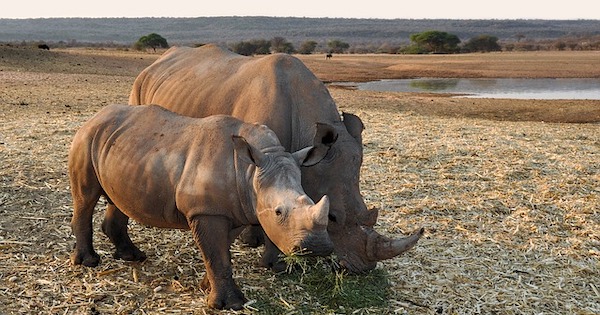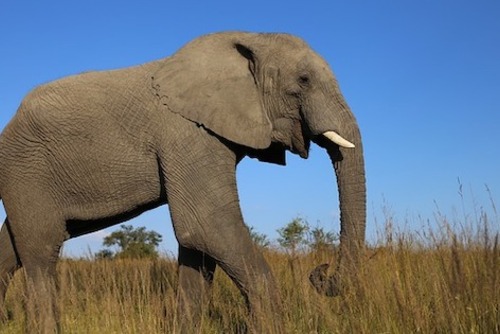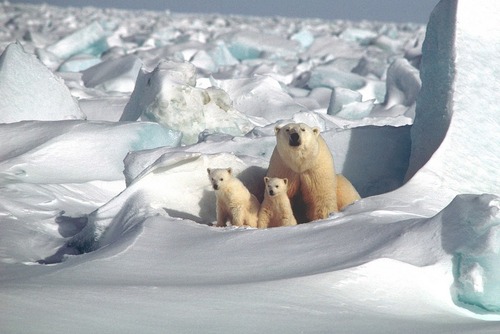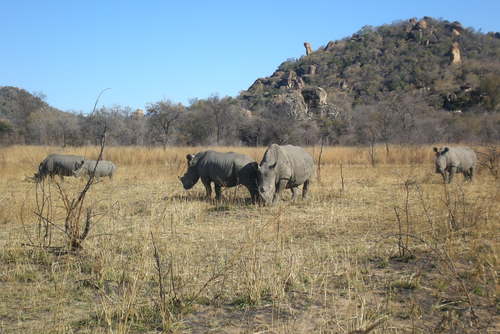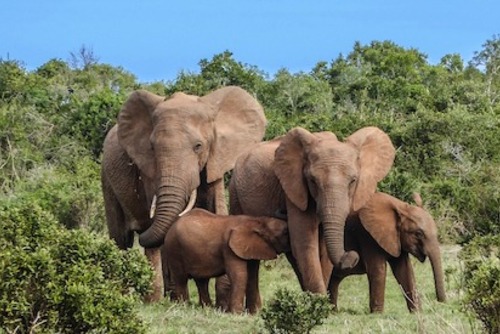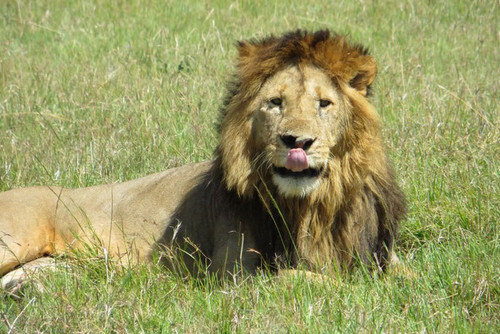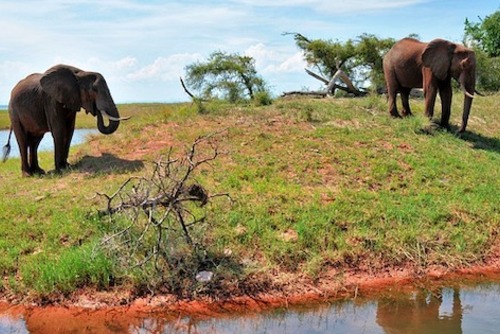Why the Need for Assistance
Black Rhinoceroses have been on this earth for 40 million years. So numerous were they and so magnificent was the mighty Zambezi Valley of Zimbabwe, that the United Nations declared the Valley a world Heritage site in 1984. It became a place where the black rhino would survive forever amid awesome scenery.
In 1975 some thousands of black rhino roamed the valley of Eden. By 1980, 3000 black rhino had survived the liberation war. A poaching onslaught ensued and by 1987 the black rhino became extinct in the Zambezi Valley.
During the late 1980’s, at the peak of the rhino poaching era, the Department of National Parks and Wildlife decided to remove the remaining 120 black rhino out of the danger zones of the National Parks and into Intensive Protection Zones of Conservancies. There are now safari ranches offering expertise and which are now caring for baby rhinos and adults.
Most calves in Zimbabwe are now hand-raised on a bottle for at least 8 years. The rhinos are kept on the milk formula for that length of time to continue the human contact and of course as a comforter. They have been raised together as a semi-domesticated herd.
Even now rhinos are being butchered for their horns and this problem is as serious now as it has ever been. Luckily there are lots of people helping rhinos and trying keep them in a natural wild environment. There is a Black Rhino volunteer program in Zimbabwe now which is a world renowned program to save this ancient animal from extinction.
You will play an important role in rehabilitating endangered black rhinos back into their natural environment. This is an experience of a life time and a chance to make a massive contribution to our African Heritage by nurturing and upbringing of rhinos and other species. Without volunteers the ranch would find it difficult to help all of these animals and keep the poachers away.
There are less than 29,000 wild rhinos alive in the world today and you can make a difference to the lives of these ancient creatures by volunteering. Spending time working with wildlife experts on anti poaching projects can be thrilling, this can involve traveling into the wild and locating poachers, destroying traps and educating local people about the importance of saving the rhino.
How You Can Help
The sad reality of life for animals like rhinos and elephants is they are facing lots of difficulties like poaching which is thriving due to the demand for ivory in places like Asia. You might also want to view our volunteer programs with elephants. Most projects last around 2 weeks and you will need to be patient and not expect all captures to be successful, there are lots of unpredictable things which can affect the process.
Wildlife orphanages and reserves are very important to conserving endangered species in places like Africa, they also help employ local people who work as guides and protectors. Some projects are located in game reserves in the Limpopo province in the North of South Africa, these reserves cover an area of over 18,000 acres so it is a vast space to find and locate rhinos.
This is a great opportunity to do more than just a sightseeing wildlife safari, you will get to live, eat and sleep out in the wilderness learning about rhinos and helping the long term future of the species. Participating is a really special opportunity where you can experience the real African bush, work in specialist teams and do something rewarding which most people never get to experience.
During projects you will work in teams helping capture, rescue and help rhinos - moving them to different reserves or countries which are either safer or a better option. Sometimes rhinos are also relocated to repopulate the species where numbers are really low, this has happened in various countries like on volunteer programs in South Africa and Zimbabwe.
Tasks
Working with wildlife experts on anti poaching projects can be thrilling, this can involve traveling into the wild and locating poachers, setting up cameras, destroying traps and educating local people about the importance of saving the rhino.
You might be cleaning rhino enclosures, providing them food, helping with research, using education to raise awareness of rhinos within local communities and also participating in the release of rhinos into the wild.
Learning to be around and walking with rhinos is a magical experience, sometimes you might not get hands on contact - these are wild animals but most days you will get to be up close and interact with them. Other tasks can include collecting valuable data on their behavior and ecology and providing the contact and security they need during this important time in their lives.
When you first join a program you will usually get a couple of days to acclimatize and get prepare for the experience ahead taking in talks, lectures and instructions. You will then get to travel into the bush and start tracking rhinos, building fences and structures and preparing projects. Once captured you will get to feed and monitor the animals in the holding camps and then be part of a transit and release effort.
Full training will be provided and so don't worry if you think you won't have any skills to offer, there are lots of different roles available and its essential there are large numbers of people on each teams due to the size of rhinos. You will learn a great deal from experienced wildlife conservation staff on these programs and also get to see other animals in the wild.
Activities can include:
Building Structures
You might work to build large structures called capture bomas which are constructed using trees and poles, this is usually around 200-300m wide and are used to help position rhinos securely.
Working in Research Teams
You might be helping finding animals or monitoring the weather and conditions to make sure a capture is successful.
Helping with Captures
Helicopters are used to place rhinos in capture bomas but people are needed on the ground to help close curtains around the animals. The holding areas sometimes need to be moved and so you might need to work quickly taking instructions and getting everything prepared. One of the hardest tasks is helping load the rhinos onto trucks, sometimes this can be a challenge.
Requirements
Contrary to what many have thought, most rhino conservation programs require no official qualifications or applicable education. You will usually need to be aged 18+ and be in good health, most projects involve working outdoors in hot and humid conditions so don't expect this to be a relaxing break. You will need to be adaptable and be able to work in teams taking instructions from highly trained local staff.
Considerations
Helping wildlife in places like South Africa will be a magical experience but it can be quite emotional when you see the effects of poaching close up. You will need to be comfortable working outdoors in hot and humid temperatures - be sure to pack light clothing and sunscreen.
Also the idea of traveling and going to volunteer in Africa can sound really amazing, but you will need to research placements to see if you would be suited to the role. Sometimes it might be better to donate to a wildlife organisation if you are not prepared to get your hands dirty and actually work hard.
How to Apply
Applying with a large international volunteer organisations will mean you get a solid support system put in place for volunteers which includes help with integration and learning the local language, full orientation/training, in-country support and also social events and excursions. Prices can vary depending on the project you choose.
You can also apply direct to local conservation projects but you might still need to pay for your accommodation, meals and also a donation to keep operations running throughout the year. You will usually need to pay for flights to your destination. To get a paid placement with rhinos you will either need to work for a conservation organisation, have a certain skill e.g. veterinary or be able to train local staff to prevent poaching.
Related Pages

